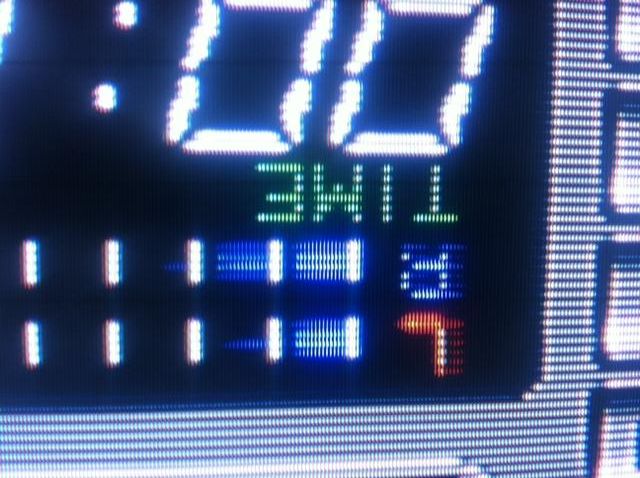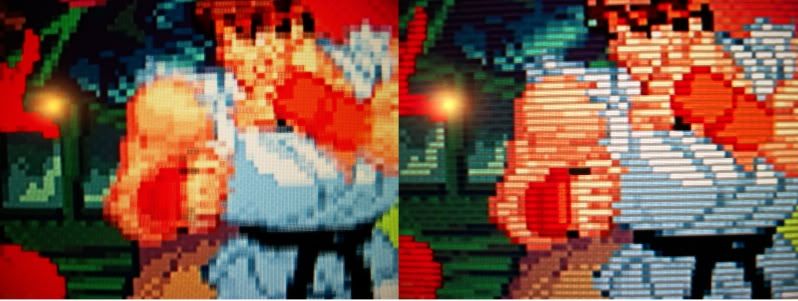After messing with the service menu on my sony tirnitron I discovered there's a reason why the edges/image was being cut off. It has what looks to be vertical bowing/pincushion issues where the image bends on the top left and right as well as lower corners making the center image distend like a bulb. Trying to fix it but it seems like its a hardware issue afterall (read something that its to due with pincushion component or something internal).

still after adjusting it I can make it to where only a little less than an inch is cut off on the bottom corners rather than the top so happy medium I suppose

Sad to hear that, if you went up and personal with those settings and couldn't fix it then I don't know if it's fixable, nothing to lose by pushing forward a little further, but yeah it's definitely sounding worse than it originally did to me.
Still, and depending on how good you can get it, all it's not lost, everything you've learned about CRT's might come in handy later on

Also a general question I wanted to get a consensus on: When it comes to Dreamcast and after do you guys still play on your CRT's for 3d games (not talking about 2d games on those sysytems like Gunbird 2 or MVC 2 as though I would probably default back to a CRT personally) or do you guys go component on an HDTV? Thoughts?
I do toggle between them.
Widely available 4:3 CRT's usually cut out at 25". 27", 29" and some very rare 34" models of the 4:3 era exist but are not common and the bigger they are the more prone to brightness issues.
Later flat ones fare a little better in the inch department... but they're 16:9 meaning yeah, you have extra real estate for 16:9... but not so for 4:3.
A 32" CRT (actually visible size being usually 29/30" because CRT measuring didn't subtract the frame) will only be able to display a 24/25" 4:3 image. (add two inches for actual marketed CRT size)
Meaning size will mostly be the same as the readily available 4:3 CRT's.
Moreover, in US throughout most production years they didn't have RGB support, sadly... I'm not too on top of later USA TV chassis, European ones sucked balls from 2000 onwards for pre-DC gaming due to "PAL-enhancements" but I know that wasn't the case for US ones, they actually possibly gotten better by introducing component on some non-HD CRT TV's, now if only they don't treat 240p being sent by component as 480i then we have the best chassis one can get on a US TV. And your TV was quite clearly pulling 240p there and not 480i judging from the photos, so yeah, having components that seems like a very good chassis.
Going back to my original point... These TV's never got to be too big for today's standards, and even if they do, they get heavier and heavier the bigger they are, hence I'm not trying to get CRT's over 20" right now and that means these are smallish TV's to play whilst being pretty close.
Due to that small size I also tend to like to be able to use plasma HDTV's for retro gaming, I prefer CRT, no question, but I like to be able to use the biggest screens I have at home. (which right now is a 65 incher)
Plus, people coming over socially won't prefer to play bomberman on my 14" CRT TV's on a corner.
Regarding quality... 480i/p can appear mostly fine and processed correctly on most HDTV's but you always notice it's SD while I don't really realize that on a CRT, that it is lacking any sort of "crispness" nor that it looks back for looking too crisp for that matter.
For that reason I tend to use PS2 and DC on a CRT, because most games aren't even 16:9 and were never meant to be run on a LCD. When they were developed those weren't all the rage. This means no AA whatsoever, bad pallete choices (too contrasty for something 3D without AA) and the like... PS2 does this worse than any other console due to the texture color limitations, they used a lot of 4-bit color textures on that console, that's 16 colors, tends to be particularly evident on LCD's due to the way they map pixels without any "pattern" going around)
That and underscan being more visible. I believe most PS2 games have 10% overscan. Even Xbox 1 recommended 7.5% overscan to developers. Wii tends to use no more than 5% because suddenly it became relevant to pull full framebuffers or the game would have black bars on LCD's. Most games also support 16:9 (and all my CRT's are 4:3 although they have 16:9 modes that further diminish the visible screen area)
Not so on DC and PS2 although by going CRT with the DC I'm losing 480p (unlike on PS2 where 90% of the games don't). In the end it's a decision like any other.
You'll eventually make your own decisions regarding that, as I'm sure you realized, there's no easy answer. It might even vary on a game by game basis.
I think 2D games are the easiest, something like Odin Sphere looks pretty good on my plasmas even without the scaler equipment. Shame it's not 16:9.
I recently rearranged my room so I have all my systems and my CRT next to my HDTV for easy switching between displays so I'm curious if I should stick with Xbox/Ps2 being connected to the CRT via Svideo rather than my HDTV with component.
I think you'll probably use the PS2 on the CRT bar some games. Perhaps the HDTV for Xbox 1 sessions.
I do recommend component cables for both, though, seeing your CRT TV also supports them. (It does, doesn't it?)











